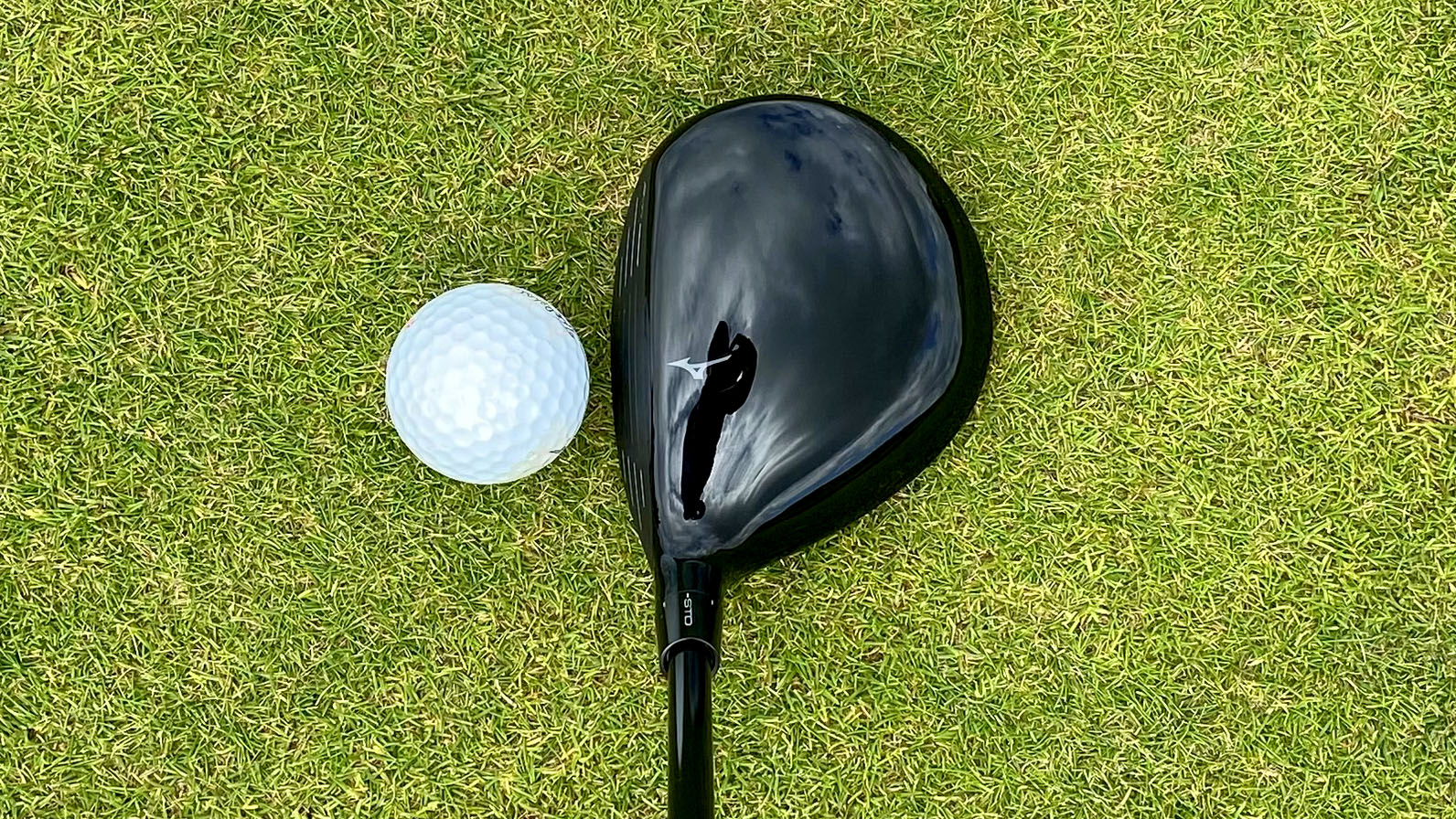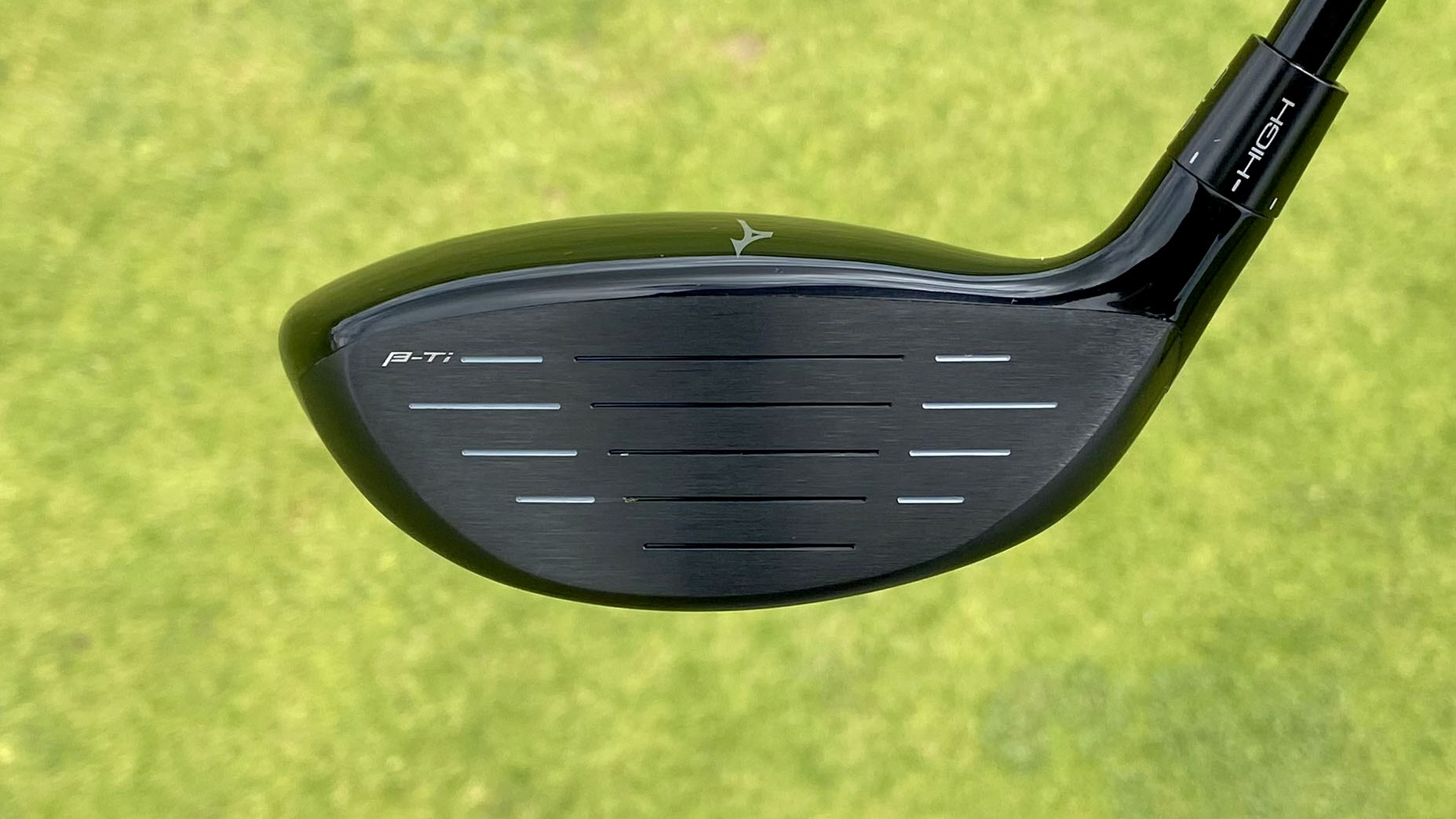Mizuno ST-G Fairway Wood Review
Joe Ferguson puts this low-handicap fairway wood to the test to see if it could benefit your game

Mizuno has produced an extremely solid, better player fairway wood here. It provides a strong flight and a really enjoyable feel all wrapped up in a great looking head. Oozing with class and shelf appeal, the performance matches the aesthetic.
-
+
Exceptional looks
-
+
Great feel and sound
-
+
Powerful flight
-
-
Deep face and low spin may intimidate some
Why you can trust Golf Monthly

When I hear the name Mizuno, immediately, visions of stunning blade irons pop into my head. In recent times, there has always been a metal wood offering but it has generally played second fiddle to the extremely popular iron range.
The Mizuno ST-G has been designed as a low-spinning option for faster-swinging players chasing a more penetrating ball flight. To boost ball speed, Mizuno has implemented their cortech chamber technology into the head, which is essentially an internal stainless steel weight encased in elastomeric TPU. This is designed to take stress away from the clubhead and provide an additional energy source.

Much like with the ST-G driver, Mizuno has absolutely nailed the aesthetics here. The clean, compact, and beautifully pear-shaped head, really appealed to my eye. The crown has a black gloss finish and a simple Mizuno logo to help center the ball at address.
The face is relatively deep, which may not appeal to those who struggle to launch their fairway woods, but again for me this was a real plus point. I use my 3 wood a lot off the tee as well as the fairway, so the extra depth felt useful when the ball was teed up a touch. The sole is also neatly put together with the 80g stainless steel soleplate and the subtle cortech chamber complimenting the Mizuno graphics.
I tested the Mizuno ST-G fairway woods both indoors using the SkyTrak+ launch monitor and outdoors at Saunton Golf Club, North Devon, on both occasions using Titleist Pro V1x golf balls. The overall first impression, even before striking the ball was one of real quality.
The upgraded Lamkin ST Hybrid grip feels very premium and the stock Mitsubishi Kai’li shaft graphics have been well chosen to compliment the Mizuno color scheme. As is often the case with some of the best Mizuno irons, you really feel like you are holding a well-crafted piece of kit.

Fortunately, once I started hitting balls, I was most certainly not disappointed. The ST-G felt very easy to launch both from the fairway and the tee, but the low spin characteristics of the head produced a powerful and neutral ball flight. Mizuno has managed to tune the spin down here through a combination of the cortech chamber, precisely placed sole weights, and a lightweight waffle crown.
Subscribe to the Golf Monthly newsletter to stay up to date with all the latest tour news, equipment news, reviews, head-to-heads and buyer’s guides from our team of experienced experts.
Ball speeds were comparable to the best fairway woods I have tested, including the Taylormade Stealth 2 Plus and the Ping G430 LS. I have to say though, the thing that stood out the most for me throughout the testing process was the exceptional sound and feel. For a fairway wood producing so much ball speed, the feel was bordering on soft which is not something I was expecting. The sound is pleasingly muted also, which contributes to the impression of softness.

I found no real bias either way in terms of curvature and felt the head produced reasonable levels of forgiveness given the nature of its design, with mishits suffering more in terms of distance than dispersion for me at least.
I tested both the 3 and 5 wood options, and one of my only criticisms would be the lack of a “strong” 3 wood in the range. Whilst the quick switch hosel of the 15-degree 3 wood does allow you 4 degrees of adjustability, the face opens significantly when tuned down in loft which I personally don’t really like the look of. An option at around 13 degrees that still sits square would be a real weapon from the tee and one that a lot of better players tend to seek out.
Overall, Mizuno has produced a really solid option here that will stand alongside some of the best fairway woods on the market. The looks behind the ball and the exceptional sound and feel were the highlights of this club for me, and it will definitely appeal to the lower handicap player looking for a lower spinning fairway wood.

Joe has worked in the golf industry for nearly 20 years in a variety of roles. After a successful amateur career being involved in England squads at every age group, Joe completed his PGA degree qualification in 2014 as one of the top ten graduates in his training year and subsequently went on to become Head PGA Professional at Ryder Cup venue The Celtic Manor Resort. Equipment has always been a huge passion of Joe’s, and during his time at Celtic Manor, he headed up the National Fitting Centres for both Titleist and Taylormade. He’s excited to bring his knowledge of hardware to Golf Monthly in the form of equipment reviews and buying advice.
Joe lives in North Devon and still plays sporadically on the PGA West region circuit. His best round in recent years came earlier in 2023 where he managed a 9 under par 63 at Trevose GC in a Devon & Cornwall PGA Tournament.
Joe's current What's In The Bag?
Driver: Switch between TaylorMade Qi35 and Callaway Elyte TD - both with Fujikura Ventus Black 6-X
Fairway wood 1: TaylorMade BRNR Copper Mini Driver - Fujikura Ventus Black 7-X
Fairway wood 2: Callaway Apex UW 17˚- Fujikura Ventus Black 9-X
Irons: TaylorMade P7CB 3-PW with Dynamic Gold Tour Issue X100 shafts
Wedges: Callaway Opus 50, 54, and 60 degrees - Project X LS 6.0 shafts
Putter: LAB Golf Oz.1 (zero shaft lean)
Ball: TaylorMade 2024 TP5x
Grips: Golf Pride Tour Velvet 60R
Bag: Vessel Player IV Pro DXR Stand